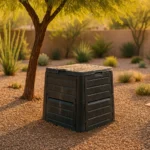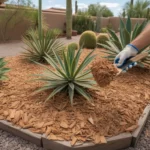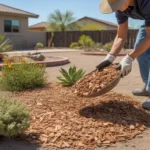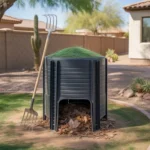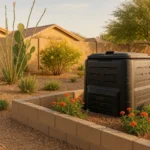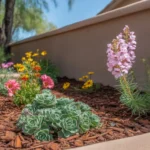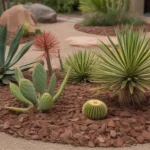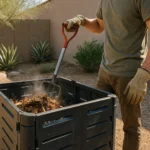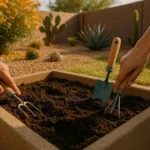Composting is a fantastic way to reduce waste and nourish your Gilbert yard at the same time. By turning kitchen scraps, fallen leaves, and other organic materials into nutrient-rich compost, you can create a sustainable and thriving garden. In this beginner’s guide, we’ll walk you through everything you need to know to start composting successfully in your Gilbert backyard.
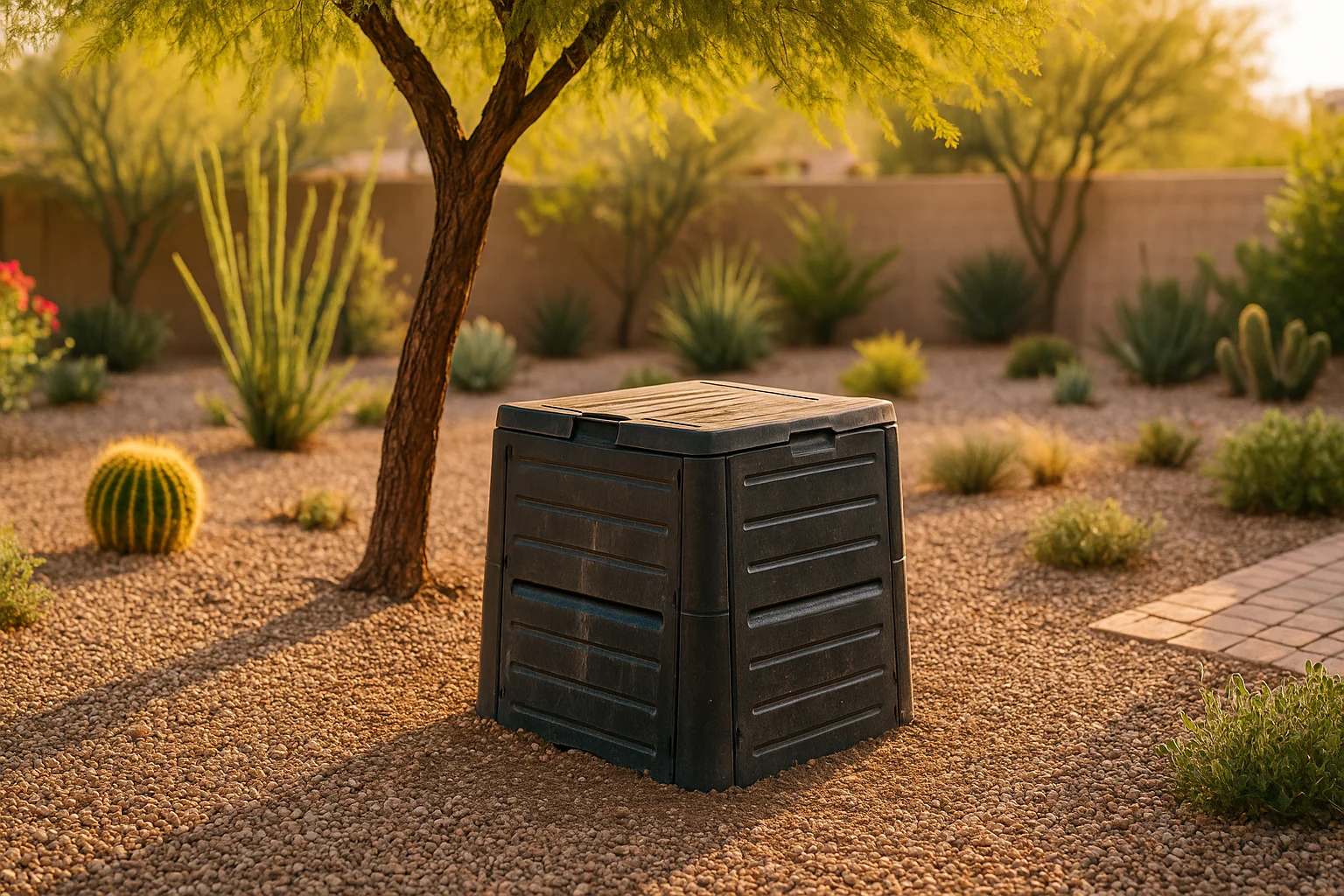
🌿 Understanding the Basics of Composting
At its core, composting is the process of breaking down organic matter into a dark, crumbly substance called humus. This humus is packed with nutrients that plants love, making it an excellent natural fertilizer for your garden. Composting relies on the work of microorganisms, bacteria, and fungi to decompose the materials over time.
To create compost, you’ll need a mix of “green” and “brown” materials. Green materials are nitrogen-rich and include things like fresh grass clippings, kitchen scraps, and coffee grounds. Brown materials are carbon-rich and include dry leaves, twigs, and shredded paper. The ideal ratio is about 3 parts brown to 1 part green.
In addition to the right mix of materials, composting also requires the right amount of moisture and air. The pile should be damp but not soaking wet, and it needs to be turned regularly to introduce oxygen and speed up the decomposition process.
🪵 Choosing the Right Composting Method for Your Gilbert Yard
There are several different methods for composting in a backyard setting, each with its own pros and cons. The three most common methods are:
- Pile composting: This is the simplest method, where you create a pile of organic materials directly on the ground. It’s low-cost and easy to start, but it can take longer and may attract pests if not managed properly.
- Bin composting: Using a contained bin, either store-bought or DIY, can help keep your compost pile neater and deter pests. Bins with lids and ventilation holes work well in Gilbert’s hot, dry climate.
- Tumbler composting: A rotating tumbler bin makes it easy to turn and aerate your compost regularly. Tumblers are often raised off the ground, making them a good choice if you’re worried about pests or have limited space.
Consider factors like the size of your yard, the amount of organic waste you generate, and your budget when deciding which method is right for you. Many Gilbert residents find that a combination of methods works well, such as using a tumbler for most kitchen scraps and a larger bin or pile for yard waste.
🥕 What to Compost (and What to Avoid)
One of the keys to successful composting is knowing what materials to include and what to leave out. Here are some common compostable items:
- Fruit and vegetable scraps
- Coffee grounds and filters
- Tea bags (remove staples)
- Eggshells (crushed)
- Grass clippings and yard trimmings
- Fallen leaves and small twigs
- Shredded paper and cardboard (uncoated)
However, there are also some things you should avoid putting in your compost pile, as they can attract pests, create odors, or introduce harmful pathogens:
- Meat, fish, and dairy products
- Oily or greasy foods
- Pet waste or human feces
- Diseased plant material
- Weeds that have gone to seed
- Charcoal ash or coal
Stick to a mix of green and brown plant-based materials, and you’ll be well on your way to creating healthy compost. If in doubt, err on the side of caution and leave it out.
🌡️ Managing Your Compost Pile in Gilbert’s Climate
Gilbert’s hot, arid climate can present some unique challenges for composting, but with a few adjustments, you can still create great compost. The main issues to watch out for are excessive dryness and heat.
To keep your compost pile moist enough, you may need to water it more frequently than in cooler or more humid areas. Aim for the consistency of a wrung-out sponge – damp but not soaking wet. If you notice your pile is drying out quickly, consider adding more green materials or covering it with a tarp or shade cloth to retain moisture.
The intense heat can also cause compost piles to break down too quickly, leading to uneven decomposition and odors. To combat this, make sure you have a good mix of green and brown materials, and turn the pile frequently to distribute heat and moisture evenly. You may also want to locate your compost bin or pile in a spot that gets some shade during the hottest part of the day.
🌻 Using Your Finished Compost in Your Gilbert Garden
After a few months of careful tending, your compost should be ready to use. Finished compost will be dark, crumbly, and earthy-smelling, with no recognizable bits of the original materials. You can sift out any larger chunks and return them to the pile to break down further.
Compost can be used in a variety of ways to nourish your Gilbert garden. Mix it into the soil when planting new beds or containers, use it as a top dressing around established plants, or brew it into a nutrient-rich “compost tea” to water your plants. A little compost goes a long way, so start with small amounts and adjust as needed.
By composting your kitchen and yard waste, you’re not only reducing your environmental impact but also creating a valuable resource for your garden. With a little patience and practice, you’ll be amazed at how composting can transform your Gilbert yard into a thriving, sustainable oasis.
🤝 Connecting with the Gilbert Composting Community
Composting is a great way to connect with other eco-minded gardeners in the Gilbert area. Consider joining local gardening groups or attending workshops and events to learn more tips and tricks for successful composting in our unique desert climate.
The Town of Gilbert also offers resources and programs to support backyard composting, including discounted compost bins and educational materials. Check out their website or contact the Parks and Recreation Department for more information.
By composting in your Gilbert yard, you’re joining a growing community of residents who are committed to sustainable living and nurturing our local environment. Together, we can create healthier, more resilient gardens and green spaces for everyone to enjoy.

